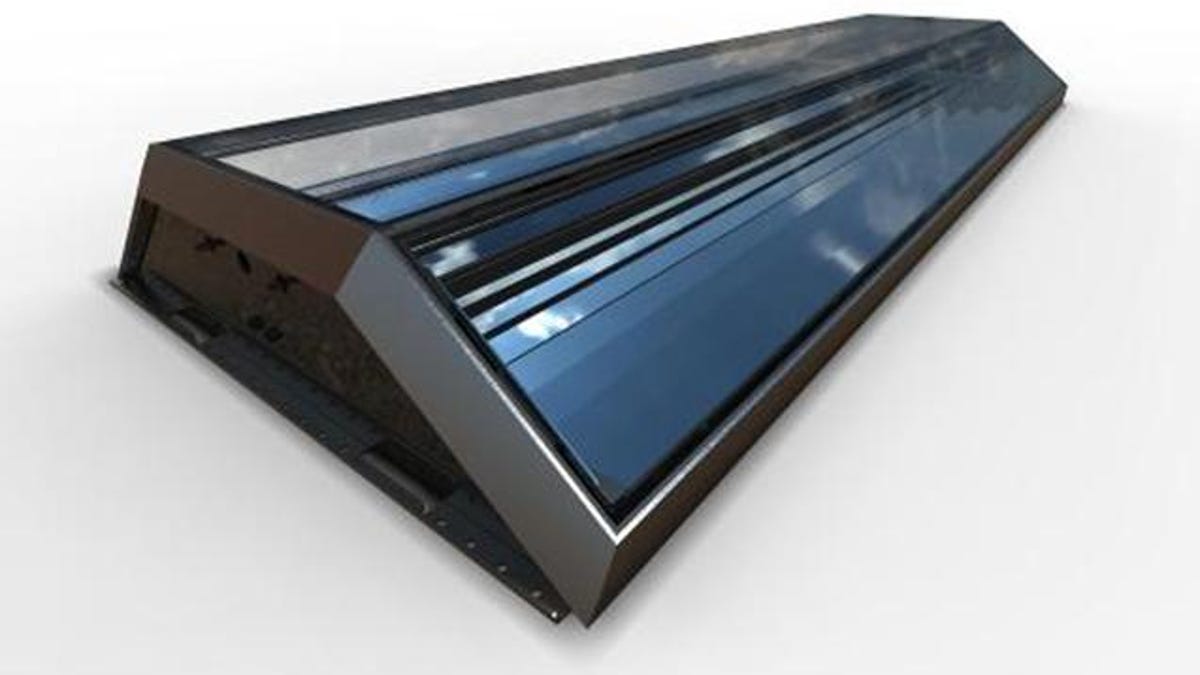Chromasun to make solar air conditioner
Adapting solar thermal tech used at utility-scale plants, start-up designs system to use the sun's heat to power industrial chillers and drastically cut peak electricity use.

Fledgling company Chromasun plans to put the sun's heat to work cooling commercial buildings.
Founder Peter Le Lievre established the company to apply concentrating solar power techniques used in utility-scale power plants on a small scale, he said on Wednesday.
The potential of applying this technology in dry, sunny areas, such as the southwest U.S. or southern Europe, to cut peak electricity usage is vast, says Le Lievre. If used widely, solar-powered cooling could cut peak electricity usage by about 15 percent, he said.
Le Lievre is scheduled to discuss the solar cooling device, now still in development, at Greentech Media's Green Building Summit on Thursday where he will disclose some initial performance data.
Cooling accounts for a huge portion of the peak-time electrical load, representing about half of the peak electrical load in California. Le Lievre projects the Chromasun device can cut that consumption by a third and make dramatic reductions in individual buildings. A LEED-certified green building could cut its peak electrical load by about 90 percent, he said.
The technology behind Chromasun's solar concentrator box originated at the Australian National University and is being commercialized by Ausra, the concentrating solar power company co-founded by Le Lievre.
A concentrating solar system creates heat by focusing light onto a pipe carrying a liquid, which can be water or oil. Chromasun is using a Fresnel lens to concentrate the light and make heat. Over the course of a day, the lenses will follow the sun to maximize the heat.
Normally, chillers create cool air either by using a building's boiler to make steam or, more commonly, by using electricity to power a compressor. Chromasun's solar concentrator can replace a boiler's heat with solar energy and feed it to existing air conditioning systems, Le Lievre explained. The system can also pull in cool air at night and introduce it into the building.
"The payback under rebates available from California and the federal government is four to five years. But when you buy a conventional air conditioning system, it never pays back--you always need to power it," he said.
Le Lievre argued that a solar thermal system will be more efficient than buying solar electric panels. He said he expects the solar air conditioner can replace existing equipment, although builder owners need to have a back-up system.
The company expects to test its systems at an office building in Dubai and a data center in California early next year, and have a commercial product available in the second half of next year. The plan is to sell the solar air conditioner through exiting HVAC distributors.
Chromasun is in the process of seeking a series B round of investment, Le Lievre said.
Updated on June 12 6:30 a.m. PT with clarification on chillers.

